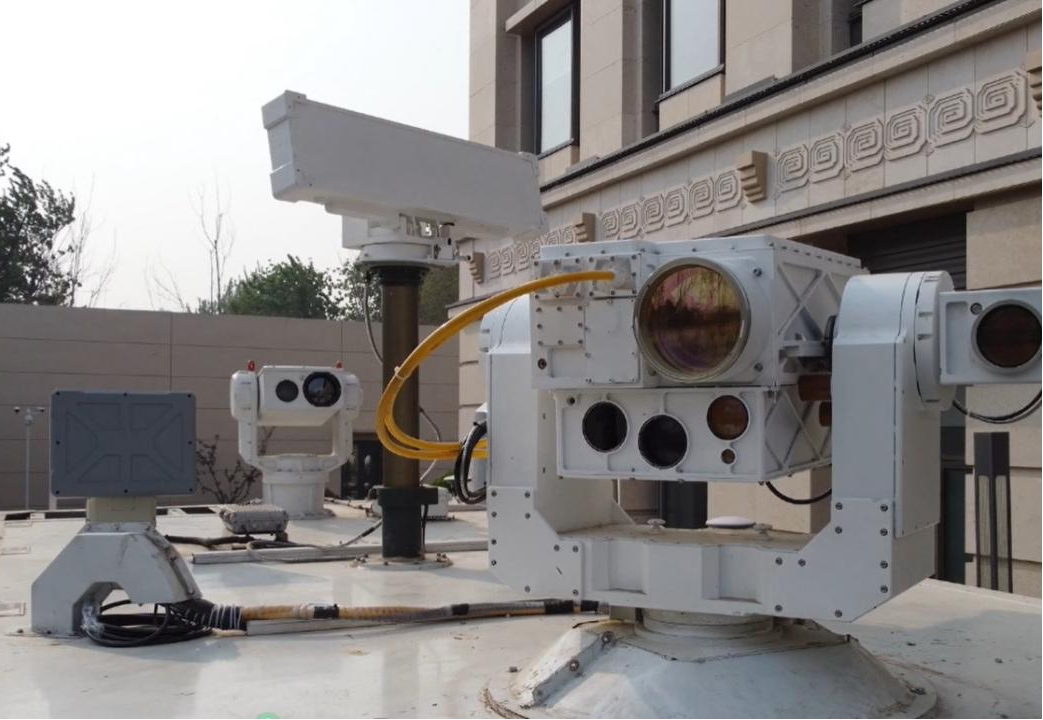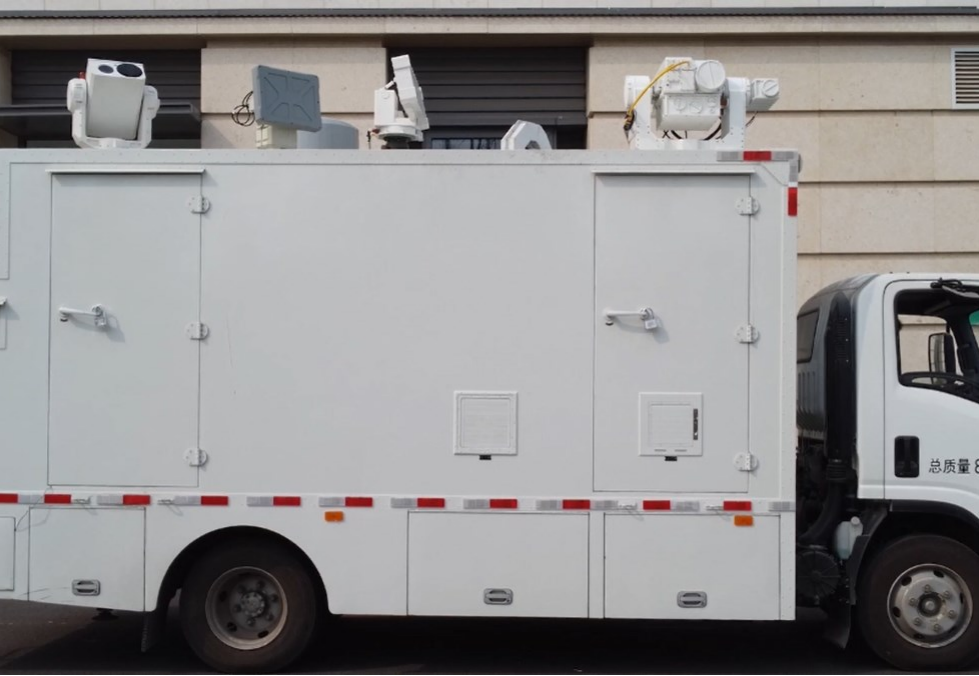- Home
- About Us
- Products
- Media Video
- Application
- News
- Support
- Contact Us








Drones have been widely used in civilian fields since their birth, but also can be used for harm.
To combat the threats posed by drone swarms, we must first be able to detect drones swarms. Due to the small size, low flying height and slow flying speed of a single drone in the swarm, it is easy to be confused with a flock of birds and is difficult to detect.


1.Radar detection
Radar detection of drone swarm also faces the problem of "low, slow and small" target detection.Drone swarm has high requirements on radar detection target processing capacity and should have anti-spot trace saturation measures. The higher the target track processing number, the better.
Early warning aircraft, ball-borne radars, low-altitude blind-filling radars, etc. have good detection effects on low-altitude drone swarm.Many domestic radar manufacturers have conducted in-depth and continuous research on "low, slow and small" target detection, and have successfully developed many small and medium-sized radars. The detection range of the Phantom 4 drone exceeds 5 km or even 10 km, and Achieve low power consumption and unattended function.

2. Acoustic detection
As the drone flies, the propeller blades and motors emit a unique high-pitched noise (rotor sound). This sound signature is captured and then compared to known sound signatures in a database and identified using multiple geolocation sources.
Acoustic detection is not as effective as other detection methods and is mainly affected by environmental noise and distance limitations. The false alarm rate is high in noisy urban environments and the detection distance is seriously affected by wind. The detection distance of drone swarm by sound waves is relatively short, usually on the order of hundreds of meters.
3. Photoelectric detection
Optoelectronic reconnaissance and surveillance uses the principle of photoelectric conversion to use the reflection or radiation of the target to obtain target information through conversion and processing to achieve target detection, discovery, identification and tracking.
1) Visible light detection
Optical reconnaissance instruments were the earliest used in the china. They have the functions of expanding and extending human vision, discovering targets that are unclear or invisible to the naked eye, determining target position and aiming.
A common surveillance system consists of high-definition cameras, transmission equipment, and monitors, and is an essential means for detection and tracking of many surveillance systems. The range of visible light detection equipment is usually about 2 km.
2) Infrared detection
Infrared detection technology uses the infrared radiation of targets and scenery to detect and identify targets.
Infrared means can also help find and track drone swarms, but the heat source of drones is much smaller than that of typical aircraft, and the detection range is usually about 1 km.
3) Laser detection
Laser detection is a method that uses laser beams to illuminate targets and receive target reflection echoes to obtain target information. It can accurately measure distance, speed and track accurately.
The sensitivity of lidar in detecting small vibrations is 2 to 3 orders of magnitude higher than that of typical radar. Lidar has high spatial resolution and can obtain a variety of information such as target size, shape, speed, vibration and rotation speed to achieve target identification and tracking.
4) Photoelectric comprehensive detection
Comprehensive photoelectric detection combines two or more photoelectric detection technologies to learn from each other's strengths and greatly improve the target's reconnaissance capabilities. For example, the combination of visible light, infrared, and laser can achieve target positioning, identification, and tracking.
4. Composite detection
Each of the above detection methods has its own advantages and disadvantages. It is difficult to achieve stable detection of drone swarms by relying on a single detection device. The use of an acoustic-optical composite detection system based on radar detection will greatly enhance the ability detection of drone swarms.
The system integrates electronic scanning air defense radar, photoelectric indicators, visible light cameras, infrared cameras and target tracking software, and can detect, track and identify drones within a range of 8 km.

The 12th D&S Thailand 2025 Asia (Bangkok) International Defence Exhibition was held from November 10th to 13th at the IMPACT Bangkok Convention Center. Argustec showcased a variety of advanced products at the exhibition, attracting many customers to stop and exchange ideas.
The 7th Saudi International Professional Drone Exhibition 2025 opened with great fanfare in the sweltering heat of Riyadh, the capital of Saudi Arabia. The Saudi Drone Exhibition has become the most influential drone show in the Middle East, one of the fastest-growing large-scale drone exhibitions i
In response to the needs of key security projects, Argustec and Turkish companies have reached a cooperation agreement to provide the Turkish market with 225 Long Range PTZ Thermal Imaging Camera.Argustec Long Range PTZ Thermal Imaging Camera is based on the latest uncooled IR sensitive technology a
Hosted, supported and co-organised by the Ministry of Defence and Ministry of Home Affairs, Defence Service Asia Exhibition and Conference (DSA) is the biggest and most efficiently organized Defence and Homeland Security show in Asia showcasing world’s most advance technologies, systems, hardware an
Marine aquaculture has a wide distribution area, with monitoring distances ranging from hundreds to thousands of meters to several kilometers or even more than ten kilometers. "Anti-theft" is the key difficulty: for such a large area, installing a suitable marine aquaculture anti-theft monitoring sy
Argustec was been invited by China Electronics Technology Group Cooperation as a supplier for a project in Thailand on March, 2021. Other supplier partner in this business trip including Mr. Chen (The Engineer of Beidou system) from Shanghai Satellite Research Institute, senior colonel Lee from Hope
Argustec Attend 2021 CPSE ExpoFrom December 26 to December 29, 2021, the 18th China International Public Security Expo is held in Shenzhen Convention and Exhibition Center (Futian). After 32 years of development, CPSE Security Expo has become a vane for the development of the global security market
Argustec will be at the 17th International Defense Exhibition (IDEX 2025) in the Middle East (Abu Dhabi) to showcase innovative long-range optoelectronic products, anti drone radar, handheld night vision cameras and handheld thermal imaging cameras, helping the industry move towards a more efficient
From June 11 to 14, 2025, the 10th Indonesia (Jakarta) International Defense Exhibition (Indo Defence) opened grandly in Jakarta, Indonesia.
On May 25, the three-day "World's No. 1 Drone Exhibition" - the International Low-Altitude Economy and Unmanned Systems Expo and the 10th Shenzhen International Drone Exhibition (abbreviated as: UASE Drone Exhibition) came to a successful conclusion at the Shenzhen Futian Convention and Exhibition C
Bird strikes pose a major threat to global aviation safety. Although many international airlines have invested in various resources such as sound, light, and biological bird repellent, the results have been minimal.
Because of inconvenient transportation, long perimeters and wide coverage in some key areas, the responsible time to deal with such intrusion situations need long time. so it is necessary to set up pre-warning belt-style in-depth protection measures around the perimeter areas. To this end, Argustec
Argustec rely on its profound technical accumulation and keen market insight, successfully launch new product - AGT-PDT400 UAV Micro Camera. 一. Overview As an important aviation payload equipment, UAV gimbal payload plays a vital role in the low-altitude economy. The Argustec UAV Micro Camera, can
With the implementation of laws and regulations such as the Anti-Terrorism Law, strengthening security awareness and improving security prevention capabilities in key areas and low-altitude areas have become important tasks for the government. Traditional perimeter protection methods, such as infrar
According to statistics, there are more than 10,000 birds of various kinds that hit airplanes every year in the world. Among aviation accidents around the world, 20% are caused by bird strikes. Birds pose a huge threat to the safety of aircraft.The prevention and control of bird strikes against airc
The 12th Pakistan Defense Exhibition is scheduled to be held in Karachi, from November 19 to 22, 2024. The exhibition brings together many well-known companies in the security field to showcase the latest technological achievements and industry trends. Argustec brought a variety of anti-UAV system,
From October 16 to 18, 2024, the 15th Czech International Defense and china Police Exhibition (FFF) opened grandly in Prague. FFF is held every two years and is one of the most influential exhibitions in Europe. The three-day exhibition brought together Argustec and more than 300 exhibitors from
01. Fewer false alarmsIn the forest fire monitoring environment, there are water mist, clouds and other objects similar to smoke, as well as high-temperature objects such as vehicle engines and water surface reflections, which will greatly interfere with the normal recognition of the fireworks algor
The AGT-TVC series dual-sensor intelligent surveillance PTZ camera is designed for forest fire alrm by Argustec after years of technical accumulation and a large number of investigations and experiments in the field of night vision surveillance. It fully meets the requirements of 24-hour all-weather
From January 16 to January 18, 2024, the 25th Intersec came to a perfect conclusion. More than 1,000 exhibitors from more than 60 countries and regions showed their latest products and technological achievements in the security field.